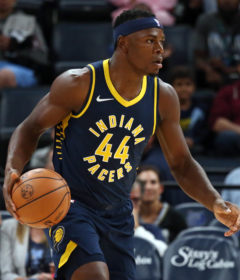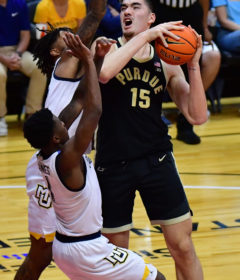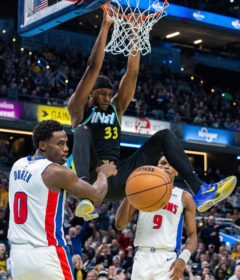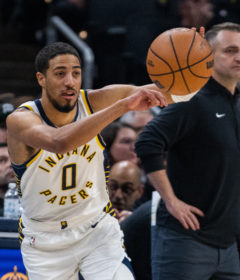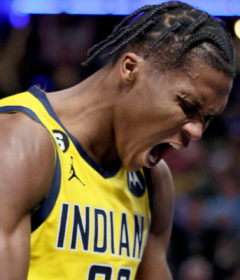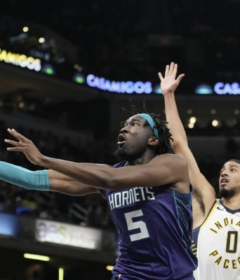ISL ranks the top 10 Purdue running backs ever
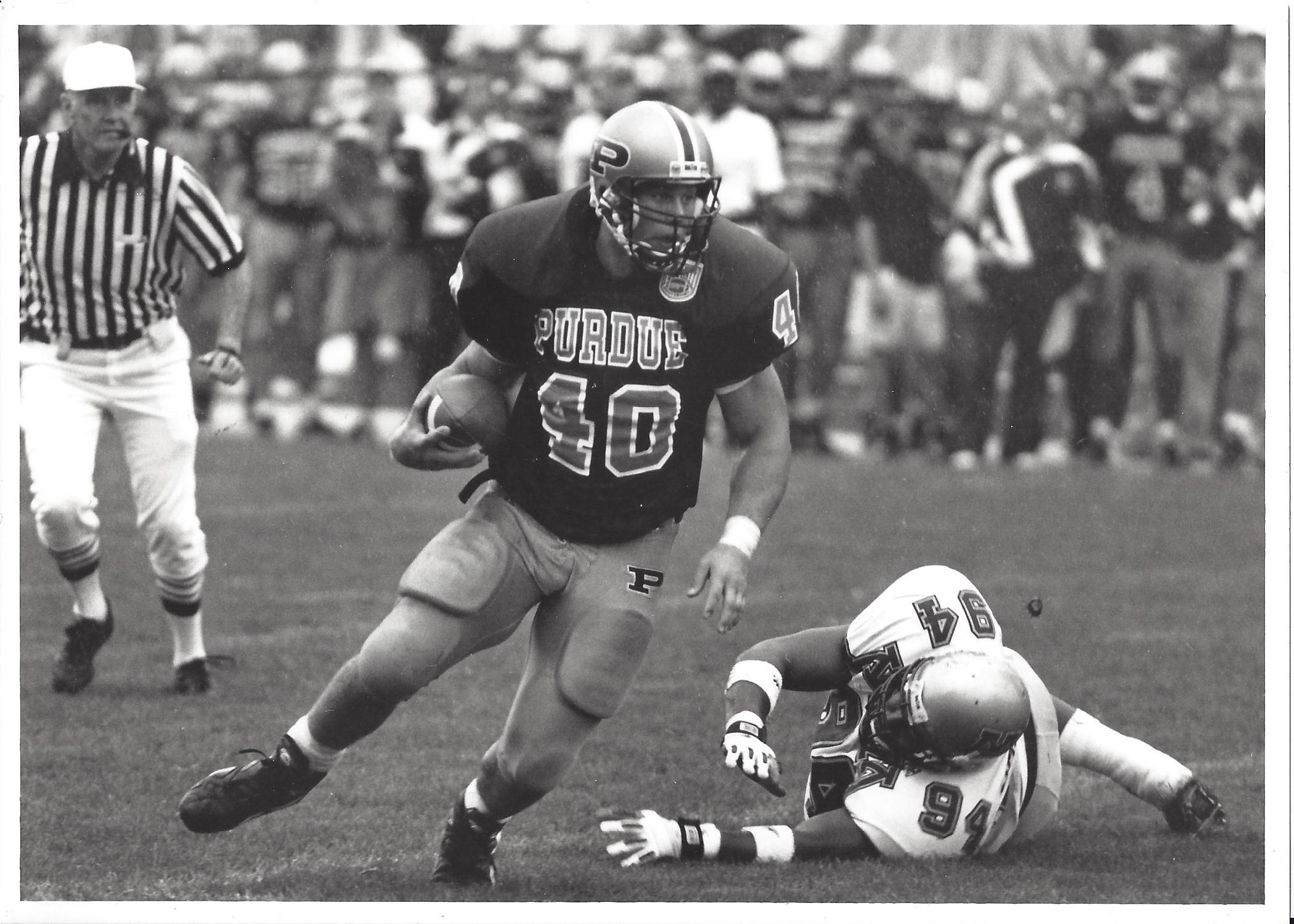
By CLIFF BRUNT
ISL Editor
Over the years, running backs often have been overlooked at Purdue, barely visible beneath the gigantic shadows of the school’s big-name passers.
Not on this site.
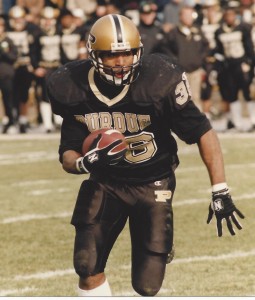
With input from our staff and outside experts, Indy Sports Legends offers a countdown of the top 10 Boilermaker ballcarriers ever.
It is a completely subjective list designed to bring attention to the running back history at a school known as the “Cradle of Quarterbacks.”
All such lists have limitations. The absence of statistics and television in the early days and the lack of living people to remember some of the old-school players are among them. Before I go too far, I want to mention a few exceptional players who weren’t included for various reasons.
Though Elmer Oliphant (1911-13), Cecil Isbell (1935-37) and Chalmers “Bump” Elliott (1943-44) are members of the College Football Hall of Fame, there is little statistical data or memories of their gifts and performances to support their inclusion on this countdown.
Ralph Welch was a consensus All-American in 1929. Isbell was the seventh overall pick in the 1938 NFL Draft. He went on to play quarterback for the Green Bay Packers, where he set records throwing to Don Hutson.
In more recent times, Mike Pruitt was a solid back in the mid-1970s who eventually was a Pro Bowl player for the Cleveland Browns. Mel Gray was a very good running back at Purdue in 1982 and 1983 who became one of the NFL’s all-time great return men.
Rodney Carter gained more than 3,000 yards from scrimmage in his career, and was primarily known as a receiver. He caught 98 passes for 1,099 yards in 1985. Here’s some of his work against Ohio State that year, a game in which he caught 15 passes for 190 yards:
Edwin Watson ran for 2,520 yards and 25 touchdowns from 1994-97. Jerod Void pounded defenses for 2,429 yards and 36 scores from 2002-05. Corey Rogers rushed for 2,436 yards and 27 touchdowns from 1991-95.
We will start at No. 10 and count backwards. First, introducing those who had input:
Tim Newton, longtime Purdue football radio voice.
Steve Herman, retired AP sportswriter who covered Purdue.
Cliff Brunt, ISL editor and former AP writer who covered Purdue.
Paul Siegfried, ISL writer and Purdue graduate.
Craig Dragash, ISL writer and Purdue graduate.
Here is the list:
10. Montrell Lowe, 1999-2002
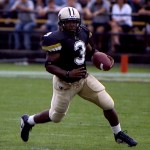
Lowe burst onto the scene in 1999 with 841 yards rushing as a freshman. In his best season, he ran for 998 yards and six touchdowns as a sophomore.
He is best remembered for running 38 times for 208 yards against Indiana in 2000.
“His performance in the Rose Bowl clinching win over Indiana is enough to put him in the top 10,” Newton said. “Very shifty runner with quick feet.”
Lowe ran for 2,648 yards and scored 15 touchdowns in his career at Purdue. Though his production tailed off as a senior, he still is remembered as a top player.
“He excelled in the spread offense with Drew Brees at quarterback and kept defenses honest,” Dragash said.
9. Tony Butkovich, 1943
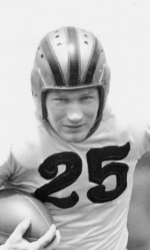
Butkovich was a one-hit wonder, but what a hit it was.
Butkovich started his college career at Illinois and finished it at Purdue. In his one and only season as a Boilermaker, he finished eighth in the Heisman voting. He was a member of Purdue’s undefeated Big Ten championship team that year — the Boilermakers went 9-0 and outscored their opponents 214-55.
He scorched his former team, Illinois with 12 carries for 207 yards and four touchdowns on Oct. 2, 1943. He ripped off 149 yards against Iowa and 147 against Wisconsin.
Butkovich ran for 833 yards total in nine games, and his 16 touchdowns are still tied with Kory Sheets for the most in a season in school history.
The Cleveland Rams drafted him in 1944, but he joined the Marines and was killed in Okinawa, Japan, in 1945 while serving in World War II. He will enter Purdue’s Intercollegiate Athletics Hall of Fame in September.
8. Scott Dierking, 1973-76
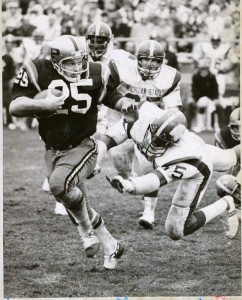
Dierking was small, but he is known as one of the toughest players to wear a Purdue uniform. He ran for 2,863 yards in his career, and might have gained more had he not split time with Pruitt.
Dierking’s best season came in 1976, when he ran for 1,000 yards and 11 touchdowns. He plowed 38 times for 162 yards and scored both touchdowns to help a Purdue squad with a 3-5 record upset No. 1 Michigan at Ross-Ade Stadium in one of the biggest upsets in college football history. He also ran for a career-best 211 yards against Miami (Ohio) that season.
“Scott Dierking was a good little player,” Siegfried said. “I guess today, you would call him an overachiever, but he was a good athlete, and was very productive. He was built like a fireplug.”
Dierking went on to play eight seasons in the NFL, gaining nearly 3,000 yards rushing, mostly for the New York Jets.
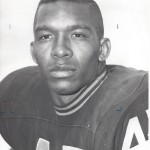
7. Perry Williams, 1966-68
Williams played at the same time as Leroy Keyes, so though he was exceptional, he didn’t get as much credit as he might have under different circumstances. He still ran for 2,049 yards and 30 touchdowns at Purdue.
He ran for 750 yards and 10 touchdowns in 1966 and scored both touchdowns in Purdue’s 14-13 Rose Bowl win over USC on Jan. 2, 1967. He scored a then-school record four touchdowns against Southern Methodist on Oct. 1, 1966.
He followed with 746 yards and 11 scores the next season. He got fewer carries in 1968 as Keyes made a Heisman push, but he still scored nine touchdowns.
6. Kory Sheets, 2005-08
Sheets was a touchdown scoring machine who broke numerous records at Purdue. He holds the school record for rushing touchdowns with 48. His senior year, he ran for 1,131 yards and 16 touchdowns on a pass-first team.
Here is his 80-yard touchdown run against Oregon:
On this next highlight, he broke some poor, innocent Central Michigan defensive back’s ankles on his way to the end zone.
Newton said Sheets “seemed to find another gear when he saw the end zone.” Dragash noted that he “had the speed along with good field vision.”
There are a lot of backs who gain yards, and Sheets gained his share — 3,341 — but only a select few are good in the red zone, especially those who only weigh 210 pounds. But Sheets had a way of getting it done.
“He was a patient runner, and once he found the hole, he had the quickest first step into the opening,” Siegfried said. “He kind of exploded through it. He just had a nose for the end zone. I think he was the perfect back for the Joe Tiller system.”
5. Harry Szulborski, 1946-1949
Szulborski ran for 989 yards in 1948, an astonishing total at the time and still one of the top 10 single-season totals in Purdue history. He led the nation with 851 yards in 1947 (nine games). He finished his career with 2,478 yards rushing, seventh in Purdue history, and averaged 5.2 yards per carry for his career. He won Big Ten rushing titles in 1947 and 1948, and was the school’s all-time leading rusher for nearly 25 years. He ran for 100 or more yards in a game 11 times.
4. Duane Purvis, 1932-34
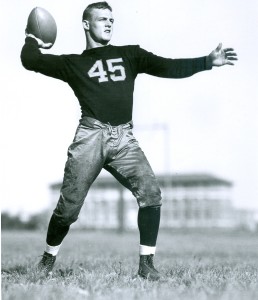
Purvis was a consensus All American in 1933 and an All-American in 1934. He ran for 1,802 yards at Purdue, still 13th in school history and averaged an impressive 5.4 yards per carry during his career. He did this in an era of fewer games.
Purvis also was a three-time track All-American who won the NCAA title in the javelin in 1933 and 1934. He was third in the world in the javelin in 1933, missing the U.S. record by 1/2 inch. His javelin throw of 66.60 meters in 1933 remained on the Purdue record books until 1982.
Purvis stayed involved at Purdue, teaching for many years in the physical education department before retiring.
The Duane Purvis Burger is a staple at the Triple XXX Family Restaurant near campus.
3. Mike Alstott, 1992-95
Alstott is known as a world champion and one of the keys to the Tampa Bay Buccaneers’ rise to prominence in the late 1990s.
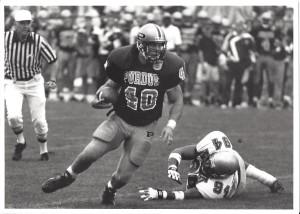
Before that, he was busting heads in the Big Ten.
“Impossible to bring down on first contact,” Newton said. “Given the focus opposing defenses had on him, his ability to break multiple tackles was amazing.”
Alstott ran for 3,635 yards at Purdue. He ran for 1,188 yards, third-most in school history, and 14 touchdowns as a junior. He ground out a school record 1,436 yards and 11 more scores as a senior.
“Alstott just ran over people,” Siegfried said. “He had the big, thick neck, the monster pads. He was huge and was the epitome of running downhill. He must have been born on the side of a mountain. The stories of his offseason workouts are legendary at Purdue — pushing a Jeep around an open field. He WAS the Purdue offense and played on some really bad teams.”
Alstott ran for 264 yards on Nov. 24, 1995, second-best in Purdue history.
For a bruiser, he had surprising speed. He averaged a stunning 5.6 yards per carry.
“Alstott … is probably the best over the past 25 years,” Herman said.
2. Otis Armstrong, 1970-72
Armstrong, a versatile speedster, is a member of the College Football Hall of Fame.
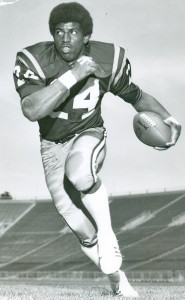
He ran for 1,009 yards as a sophomore, 945 yards as a junior and 1,361 yards as a senior. His senior total, in 1972, was the best in Purdue history until Alstott surpassed it. That year, he ran for a school-record 276 yards against Indiana in his final game, a mark that still stands, and 233 yards against Northwestern. He was a consensus All-American that year and eighth in the Heisman balloting.
“I remember him not being a really tall guy, but he was solid,” Siegfried said. “He wasn’t one of these one-cut runners. Purdue would pound him up the middle. He couldn’t be tackled. Even though he played with a really good quarterback in Gary Danielson, Armstrong was the man.”
Armstrong also was a dangerous return man, accumulating nearly 900 yards worth of kickoff return yards as a Boilermaker.
Armstrong went on to star for the Denver Broncos. He led the NFL with 1,407 yards rushing in 1974 and finished his pro career with 4,453 yards rushing and 1,302 yards receiving.
1. Leroy Keyes, 1966-68
Purdue is the “Cradle of Quarterbacks,” but Leroy Keyes is the school’s most decorated player of all time.
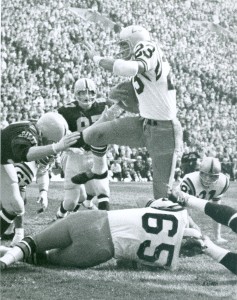
Keyes finished third in the Heisman balloting as a junior in 1967, when he ran for 986 yards and 13 touchdowns with an incredible 6.6 yards per carry, a school record to this day (100 or more carries). He also caught 45 passes for 758 yards and six more scores.
As a senior, he added 1,003 yards and 14 touchdowns rushing, plus 33 catches for 428 yards and another score. He finished second in the Heisman balloting, the highest finish for a Boilermaker. He was a consensus All-American both years.
In one of his best performances, he scored four touchdowns, ran for 140 yards and had 149 yards receiving against Indiana on Nov. 23, 1968.
“Leroy Keyes undoubtedly is the top running back in Purdue history,” Herman said. “More than 40 years later, I still haven’t seen anyone match Keyes’ athleticism, power and speed.”
Keyes ended his career with 2,090 yards rushing and 1,204 yards receiving. He ran for 29 touchdowns, and caught seven touchdown passes.
Keyes also threw 22 passes in his career, and eight went for touchdowns. He also played in the defensive backfield. Siegfried is too young to remember Keyes, but his father, a Purdue graduate, told him all about the superstar.
“My dad said he was the best Purdue player he had ever seen,” Siegfried said. “He played both offense and defense and was equally great. And despite playing two ways, he never seemed to get tired, and was the strongest player in the fourth quarter.”

